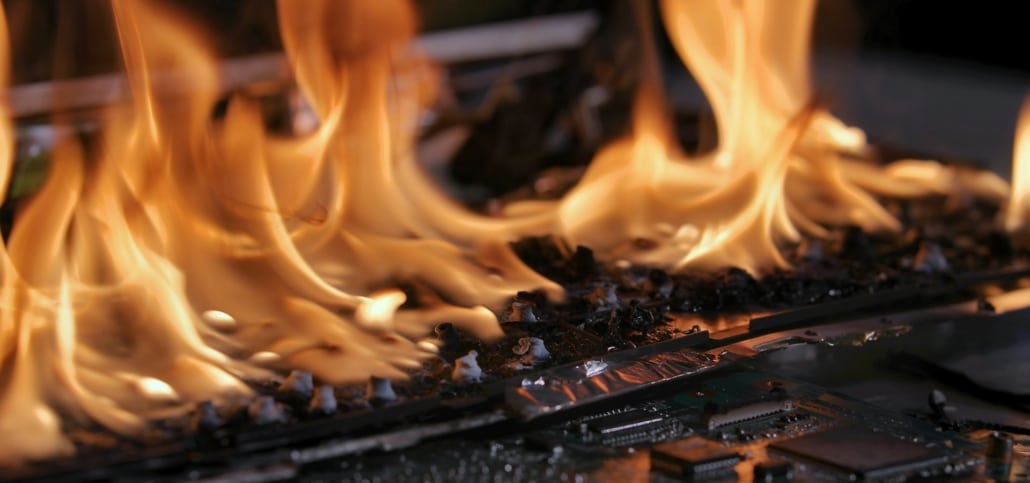The Ultimate IT Disaster Recovery Checklist
When disasters strike, your business can’t afford to slow down or put operations on hold. Employees, investors, and customers alike rely on your business for a variety of reasons, so you need an action plan to get back up and running right away. Disaster recovery plans are essential for your IT systems. Here, we discuss the ins and outs of an effective IT disaster recovery checklist, including the vital data backup services your business needs, so you’re covered if disaster does strike.
The Primary Goals of an IT Disaster Recovery Plan
If your business is impacted by a disaster, whether it’s a natural disaster or something affecting software and hardware, it always helps to have a disaster recovery plan on hand. Failure to immediately implement the appropriate recovery actions can have severe consequences for your company and its customers. The primary goals of your IT disaster recovery plan should include:
- Minimizing risk to your business right away.
- Effectively addressing impacts of the disaster.
- Complying with industry regulations and best practices.
- Addressing employee and investor concerns.
- Quickly resuming business operations.
Your disaster recovery plan must include actionable items that put the minds’ of those involved with your organization at ease. With valuable backup solutions like cloud services, a practical IT disaster recovery plan in place, and an easy-to-follow disaster recovery checklist to keep you on track, restoring your operations should be quite straightforward.
Which Disasters Cause the Most Damage to Your Business?
Before we get into the nitty-gritty of what you need in your IT disaster recovery checklist, it’s important to understand the different types of disasters that can impact your business’s daily operations. Let’s dive in:
Software-Related Disasters
Business-critical software and applications are what keep your company running smoothly and communicating effectively with customers and within the organization. Most often, software-related disasters include:
- Application failures
- Data leaks or breaches
- Cyberattacks
- Software-defined network issues
Software disasters that affect applications such as CRM or put confidential information at risk can be disastrous and cause a lot of downtime for your business. With a disaster recovery plan, you can prepare for impending software issues and prevent data breaches for your business. Then, you won’t have to worry about what might happen when your software and applications eventually fail.

Hardware-Related Disasters
Alternatively, hardware-related disasters can happen as well. Hardware-related disasters have significant impacts on items like routers, servers, and other essential business IT equipment. Examples of hardware-related IT disasters include:
- Host system failures
- Equipment damage
- Network blackouts
Hardware failures can occur thanks to several different factors. For example, malfunctioning air conditioning systems can cause servers to overheat. Or, there might be network blackouts in your area due to downed power lines and wires. Whatever the reason is for your hardware failure, a disaster recovery checklist will help quickly mitigate the issues without any exacerbation.
Natural Disasters
Finally, your business must also prepare for potential natural disasters in your area. According to The American Red Cross, some of the most common kinds of natural disasters that hit the United States include:
- Hurricanes
- Wildfires
- Floods
- Earthquakes
- Tornadoes
Companies headquartered in southern states might worry more about hurricanes having an impact on business, while those in the Midwest might have higher concerns surrounding tornadoes. On the West Coast, companies need to stay vigilant about a variety of natural disasters, like earthquakes and forest fires.
Clearly, the risk of experiencing a natural disaster is relatively high wherever you are located. Natural disasters can have nasty effects on network stability, hardware, software, and so many other services your business relies on each day. Luckily, you can remain prepared for whatever weather is thrown your way with a disaster recovery plan.
IT Disaster Recovery Checklist: Everything You Need to Know
Now that you know how different disasters can affect the way your business operates from day to day, it’s time to develop your disaster recovery checklist. Your disaster recovery checklist will lay out step-by-step instructions to resume operations as quickly as possible after implementing your disaster recovery plan. Here are the essential steps every IT disaster recovery checklist should include:
- Conduct a risk assessment analysis.
- Analyze business impacts.
- Assess damage to any hardware or software and take inventory.
- Create a disaster recovery team with assigned roles and responsibilities.
- Designate a disaster recovery site if your office or place of business is inoperative.
- Prepare for and perform failback operations, which restores functions after the initial failover moves your important information to a remote disaster recovery site.
- Store critical information off-site, in a secure, remote location.
- Determine your current and future equipment needs.
- Establish reliable communication channels with your company.
- Report disaster incidents to your different stakeholders.
- Implement your disaster recovery plan with assigned roles.
- Analyze the effectiveness of your disaster recovery plan and re-strategize as necessary.
After running through the critical items listed in the checklist above, you’re ready to implement your disaster recovery plan. If you’re well-prepared with off-site storage and data backups, the process is simple. These safety measures will make it much easier to restore your operations.
Without a comprehensive checklist and the proper disaster recovery plan, you’ll likely experience extra downtime, lost revenue, and ultimately, leave your system open to security breaches. By assessing your plan’s effectiveness, you can take practical steps to form new strategies and be better prepared for the next potential disaster.
Don’t keep your company and its clients in the dark after a disaster. Prepare with a comprehensive disaster recovery checklist. Then, utilize a well-written, professional disaster recovery plan to put your business back into regular operation.

Don’t Get Caught Without a Disaster Recovery Plan
Natural disasters or hardware and software-related issues can all be highly detrimental to your business and its bottom line. The downtime spent scrambling after a disaster can be costly both in terms of revenue and reputation. Restart your operations and store the trust of your employees, investors, and clients by preparing a comprehensive disaster recovery checklist.
If you’re still not entirely sure where to start as you create your disaster recovery checklist, IT professionals can help. Contact Total IT today to begin brainstorming ideas for the best disaster recovery plan for your business. With expert support on your side, your organization will never be stuck or unprepared for a disastrous situation again.




